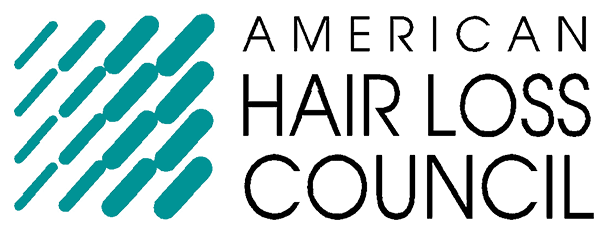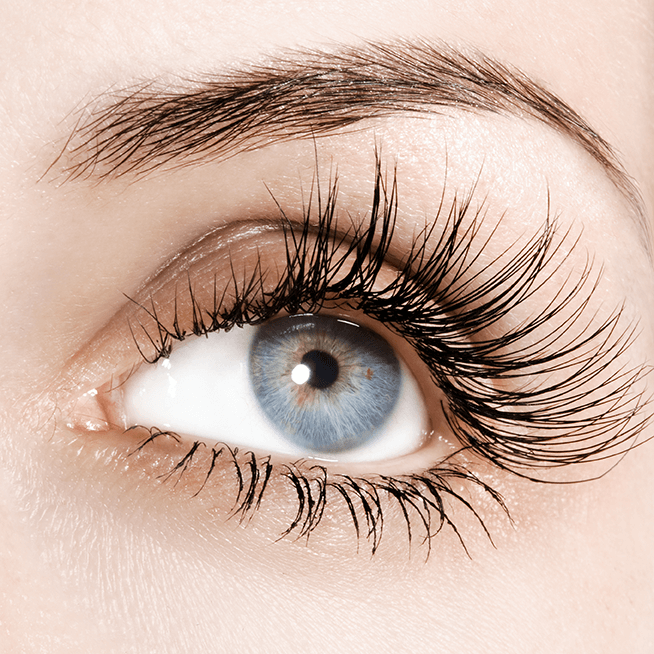Listen Now to “Treating Hair Loss in Men and Women, New Hair Regrowth Treatments, PRP, Laser Therapy, ARTAS robotic assisted hair transplants, NeoGraft FUE hair transplants and more…
Listen Below:
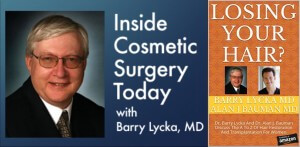
Don’t miss: “Losing Your Hair? Guide to Hair Restoration” by Dr. Lycka and Dr. Bauman – eBook Now Available on Amazon
13 March 2017 Inside Cosmetic Surgery Today on WebTalkRadio.net Interview with Dr Barry Lycka & Dr Alan Bauman
Dr Barry Lycka Cosmetic Dermatologist from Edmonton, Alberta is talking today with
Dr Alan Bauman hair transplant surgeon from Boca Raton, Florida.
This is your number one internet radio show on cosmetic surgery, in the world! We get over 8000 downloads per week, because this show is designed for those who want the newest and best information about cosmetic surgery, and of course we have the best expert doctors as our guests. Thank you to all our listeners who have made that growth possible. If you have any topics you would like us to feature, please email Dr Lycka directly on info@barrylyckamd.com.
Today Dr Lycka is talking with very popular repeat guest, Dr Alan Bauman, from his practice in Boca Raton, Florida. Dr Bauman always shares with us the very latest and best techniques & technologies for looking after our hair and dealing with the devastating problem of hair loss. He is one of the most knowledgeable people in the world when it comes to hair loss treatment. Both men AND women suffer hair loss for a variety of reasons. It is such a common problem and yet it is such a debilitating problem too. People hate to have thinning hair and a bald head. Let’s get right into Treating Hair Loss
Welcome, Dr Bauman!
Thank you, Barry it’s great to be back with you.
What percentage of men get hair loss, Alan?
It can start any time after puberty so 20% of men in their 20s, 30% of men in their 30s, 40% of men in their 40s and it just keeps going upwards from there. So over half the men over the age of 50 are going to have some visible signs of hair loss. And of course, many don’t want to lose their hair! They want to keep looking young and feeling great!
If a man has hair loss, is it always due to their genes & hereditary factors or are there different reasons for hair loss as well?
There are lots of types of hair loss. 98% of men who come into the clinic have hereditary male pattern hair loss. There are sometimes exceptions. Dr Bauman had an interesting case today, an unusual medical condition that obliterates the hair follicles and sometimes mimics what male pattern hair loss looks like. But the majority will have the tendency to weak, miniaturized hair, and eventually some degree of baldness and hair loss.
Let’s start at the beginning. A man is starting to lose his hair what are the signs that he has male pattern alopecia?
Typically, it starts with a recession of the frontal hairline. The forehead starts getting bigger as the hair recedes at the front and sides. Also, there can be loss of density and fullness and coverage in the crown area too. These are the 2 places that we typically see male pattern hair loss start. It can progress onwards from there. As the hair follicles miniaturize, and weaken over time, then there is the loss of more and more density, more loss of caliber of hair, and loss of coverage even over the entire top of the scalp. And of course, it spares the hair follicles around the sides and back so you typically see that ‘monks ring’ of hair around the sides and the back.
Of course, some people consider hair loss as sexy – not everyone agrees with that! But the good news is that the hair follicles are being miniaturized – they are NOT going away. That is good news, isn’t it?
Yes, it is. If action is taken early enough then you have time. You can interrupt the miniaturization process and regrow those hairs, thicker, fuller and healthier. Once a follicle is dead and gone then you must do something more aggressive to restore hair growth.
Let’s start with a man starting to lose hair. What can they do themselves without visiting a doctor – are there any over the counter products that can help?
There certainly some over the counter treatments that are FDA approved, such as minoxidil products. There are also over the counter, consumer, low level laser devices available. BUT, even though they are FDA approved proven to grow hair sometimes patients can have problems because they don’t know exactly how to use the treatments or even what to expect. Even if they are doing the treatments 100% correctly they don’t know what to expect in terms of a result.
The most important thing for listeners to understand is that if they are experiencing some hair loss they should seek expert advice, find a hair restoration physician. They have to find someone who can measure and monitor their hair situation and really diagnose exactly what is happening. Male pattern hair loss may be visible from across the room but there may be areas of weak or miniaturized hair that are not yet dead and gone, or areas where too much density has already been lost and applying a topical treatment from over the counter is just not going to get the job done.
That is such an important point. The first thing that anyone who is suffering a dermatological problem, and that includes hair loss, needs to do is get a proper diagnosis. Without a diagnosis, nothing can be treated properly. So back to the example quoted earlier, that person had a rare scarring process going on, causing the hair loss. That person had already been to a dermatologist who said it was just male pattern baldness, and that was that. But on closer inspection it was a totally different problem of scarring alopecia, that was mimicking male pattern baldness.
What tests can be done to help diagnose what the hair loss is and what type it is.
The first thing that happens at Dr Bauman’s clinic is a detailed evaluation. What is happening, how quickly, are there risk factors, medical factors, diet, illness, things that affect the body’s metabolism, medication. All these contribute to the whole picture of the hair loss situation.
Then what does it look like, is it receding, balding at the crown? Measurements are taken with a Hair Check Trichometer. It is a tool which measures the numbers of hairs and how thick they are in different areas of the scalp. The permanent zone (that are where your head hits the pillow first) is compared against the crown, the frontal, temples. These measurements are very important over time. They have established a base line against which it is possible to track the response to different treatments.
Then the second thing will be to look at the scalp under a microscope. And amazingly we have something we can add to an iPhone to do this, and look directly at the scalp with high powered magnification. This helps determine the density. How any hairs are there, are they good, thick and healthy? Is it a forest of oak or a few blades of grass!
These tests help us determine how the hair loss has progressed and predict the expected response to various treatments.
Age also affects the different risks for patients. For example, an older man sitting at home on a diet of tea and toast might wonder why his hair is falling out. Younger men using supplements to help improve physique and sports performance that can also cause hair loss. Creatine pills for example have been shown to cause hair loss, with aggressively miniaturized hair follicles.
There is a huge movement in regenerative medicine and anti-aging to do hormone replacement therapy and men and women can be on testosterone which can be converted in the body into dihydrotestosterone which we know, for men, is the trigger for male pattern hair loss. That is therefore a big risk factor. So, steroids, and hormone replacement therapy under the care of a general practitioner, can affect the hair follicle cycling.
Even poor sleep habits can cause excessive hair shedding.
So, moving on to hair loss in women.
What percentage of women have hair loss?
This also varies by age, and around 50% of women aged 50 and older will have some visible signs of hair loss. The feel decreased volume, maybe less coverage on their scalp. In women, hair loss can happen any time after puberty, just like in men. It is typically subtler, and is not usually easily recognized from across the room as in men.
Female pattern hair loss looks different.
Is there always a strong family link with this?
Yes, just as with men, there is a strong genetic link, but women’s hair is more sensitive to other things such as illness, hormone imbalance, disrupted sleep/wake cycles, stress – even than men.
There are also plenty of non-genetic hair loss such as auto-immune conditions, so once again we need to get the ladies in for a diagnosis and look for the risk factors and issues than can be contributing to the hair loss situation. Problems could be in the form of excessive shedding, receding hair line, and usually a loss of volume. They notice that they can’t do the same hairstyles they could when they were younger.
Again, what are some of the simple tests that you do, and what patterns do you see in female hair loss situations.
Once again, we will be looking at the scalp and going through the timescale of how and when the hair loss has occurred. Female hair loss usually does not recede the hairline but will be a loss of density and caliber. It usually spares the hair around the back of the scalp and around the sides -they remain unaffected. There will be the detailed medical history, blood tests, and if it is unclear what is going on at the scalp then maybe a biopsy will be suggested. But, most of the time, the diagnosis in the clinic will be made by the medical history and the physical examination.
When patients visit Dr Bauman’s practice, it is not an automatic biopsy procedure which is often offered in a dermatology office, there will be an hour-long investigation to see exactly what is happening with their health and to try and get to the bottom of the situation. The risks are identified – medications can be a very strong trigger for female pattern hair loss.
OK. So, we have got to the point where, for both men & women, we know they have hair loss, male pattern hair loss or female pattern hair loss and what is causing it.
What are the first steps in treating it?
First steps are to go through the different options available to treat the hair loss.
For men, the oral therapies are the first line approach – Finasteride, is the first line of approach. For women, it might be a topical medication, or a laser light device. These are the basics. Even at this point many men, even though they understand that Finasteride has a strong influence in preserving, protecting, and enhancing their own hair, they may want to try something that is non-pharmaceutical, and shy away from the typical FDA approved oral treatments. This means Dr Bauman goes through the whole gamut of therapies across the board that are available. Many people want to avoid the pharmaceutical treatments these days.
Typically, if we know it is androgenetic alopecia, then Finasteride (Propecia) is the medication which reduces the DHT and that works ‘pretty darn good’ in 90% of the time, and patients look the same or better in the long run, for men. In women if a topical medication is going to be used, then Dr Bauman will typically prescribe a compounded version of Minoxidil, like Formula 82M as opposed to the Rogaine that is available over the counter. Rogaine tends to be more greasy and gooey and not all that strong. The compounded medications, like 82M, are stronger, give a little bit more ‘oomph’ to the treatment, and are a lot easier to use. Unlike the oral medications which is taken once a day, topical medications must be used twice a day to be truly effective. Both men and women can use the topical medications.
Laser light therapy devices can be used for both men and women. There are devices to take home – patients don’t have to go to the clinic 3 times a week for clinic treatments. They take the Laser Cap device home and use it 30 minutes every other day, to get the best results.
If you want to stay away from chemical therapies then you are looking at laser light devices, and maybe even PRP treatments.
PRP – Platelet Rich Plasma – is a new modality that is used in regenerative medicine. We harvest and exploit the platelets that regenerate tissue.
When you are talking about laser therapy, are you talking about the red lasers that are found in some of these cap devices?
Yes. Laser therapy for hair regrowth is in the red wavelength, it is visible red light but it is the laser diodes that give the best results, NOT LED’s. There are laser caps – you wear them on your head, they are hands free, cordless and rechargeable, and they are powerful. They are more effective and easier to use than the devices we used to have in the clinic!
Are there any better devices? It’s easy to get lost when searching for ‘laser for hair loss’ everybody seems to be trying to sell one!
Yes, there is a huge variety of different lasers ‘out there’ and many are FDA cleared for hair regrowth, so they have been proven to the FDA that they are effective but you need to look for the laser with the highest number of LASER diodes – not LED’s. They must be laser light – those are the diodes that are the most effective in re-growing hair. Importantly, to get some regeneration, the hair follicles must not be dead and gone. They can be weak but not dead. But that is true of just about any other therapy as well. There must be a hair follicle there for it to grow hair.
For a laser cap device, you should get one with about 220 diodes. There are some coming out with 300 diodes which are the latest and greatest ones. They must cover the whole scalp and deliver enough energy to get some good results. And we must measure to check the progress of results!
Back to oral medications – do you use oral medications in women too?
Post menopause we can use the hormone modulating treatments because there is no risk to a pregnant woman or developing fetus. But to determine if a woman should take Finasteride, given that she is post-menopausal, a genetic test called “HairDX” is taken first to determine if she is androgen sensitive. Not all women are androgen sensitive. We can determine who is most likely to respond to the Finasteride / androgen modulating treatments. If a woman is androgen sensitive, then it is possible to prescribe the Finasteride for post-menopausal women. Dr Bauman sees some great results with it.
As we come towards the end of our time today, please can you summarize for us what we have talked about today?
The most important thing for any man or woman who is experiencing hair loss and doesn’t like it, Dr Bauman’s advice is to get a medical evaluation by a board-certified hair restoration physician. The ABHRS is the American Board of Hair Restoration Surgery. It is also an international board and there are only a small number of physicians in the world who have achieved that board certification. When you have the evaluation, make sure you get a complete medical history, and do have evaluations such as the HairCheck measurements, and the HairCam microscope photos of the scalp and that they are recorded in your medical records. Ask for a copy of those.
Then get started on some effective treatments. Oral therapies – primarily for men;
Topical therapies – for men and women;
Laser Light devices- physician prescribed like LaserCap
PRP Platelet Rich Plasma – we didn’t talk too much about that but it’s an autologous injectable no-downtime hair re-growth treatment done over a lunch-hour that stimulates hair growth. It can work for both men and women in the early stages for up to two years.
You really need to try and keep your existing hair. If you don’t keep what you have then you are going to need some degree of FUE transplantation to fill in those gaps.
The simple advice is ‘the earlier the better’. Anyone listening who is suffering from hair loss, and not currently considering any form of treatment, then the time really is now to get the best results.
The earlier treatment is started, then the better the results are over the long run. If you wait until too many hair follicles are damaged or dead, then the treatments become more aggressive and more invasive as you go. We have great minimally invasive technology and techniques these days, to restore your own living and growing hair. In the early stage of the game patients need to take some positive action, and seek out therapy from well-trained and experienced hair restoration physicians who are trained in the medical management of hair loss.
Sadly, in the USA, most dermatologists don’t have time to do a hair loss consultation so there is a complete new sub-specialty (only about 15 to 20 years old) board certified hair restoration physician. Those physicians exclusively dedicate their practice to the treatment of hair loss and hair re-growth.
How can listeners access Dr Bauman’s specialist service?
Thanks to the power of the internet, via Dr Bauman’s website, patients can initiate a long-distance consultation, upload photos, schedule a phone call – or do it through Skype, or Facetime – and it’s almost as good as being at the office. Obviously Dr Bauman can’t do the measurements or look with the microscope, (although he is working on that!) He however can at least make a start on understanding exactly what is going on. Dr Bauman also certifies HairCoaches, so there may be someone local to them who the patient can be referred to at a hair center who can take the measurements – HairCheck and HairCam evaluation with the microscope. There are over 150 Certified HairCoaches ‘out there’, many of them international, who have been trained by Dr Bauman to help him diagnose and treat hair loss. Simply click Start Consultation.
Or of course, you can visit Dr Bauman’s facility in South Florida, Boca Raton. He has a new building completely dedicated to the treatment of hair loss and hair transplant procedures.
Thank you once again Alan for spending time educating our listeners about hair loss. Dr Lycka loves to do this show and provide real information to the listeners.
Thank you, Barry, for being such a gracious host. Dr Bauman knows that many people listen to this podcast from around the world, and say to him ‘I heard you on Dr Lycka’s show, and the information really helped me get started dealing with my hair loss.’
Contact details for Dr Alan Bauman:
Dr. Alan J. Bauman, M.D. – ABHRS Board Certified Hair Restoration Physician
Telephone: Boca Raton: (561) 394 0024
https://www.baumanmedical.com/
If you or someone you know has hair loss, hair thinning, baldness, or eyebrow / eyelash concerns, click to start either a long-distance virtual consultation OR an in-person, in-office consultation with Dr. Bauman. You can also Ask Dr. Bauman a Question or simply call Bauman Medical Group at +1-



 Prominent Hair Loss Expert Interviewed for New eBook, Rejuvenating Hair as Women Age
Prominent Hair Loss Expert Interviewed for New eBook, Rejuvenating Hair as Women Age Dr. Bauman on Inside Cosmetic Surgery with Dr. Barry Lycka
Dr. Bauman on Inside Cosmetic Surgery with Dr. Barry Lycka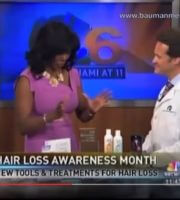 VIDEO: Divorce, Smoking, Stress, Hereditary Causes of Hair Loss and New Treatments
VIDEO: Divorce, Smoking, Stress, Hereditary Causes of Hair Loss and New Treatments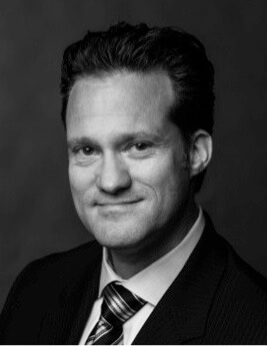 Dr. Alan J. Bauman, M.D.Hair Loss & Hair Transplant ExpertBoca Raton, FL
Dr. Alan J. Bauman, M.D.Hair Loss & Hair Transplant ExpertBoca Raton, FL